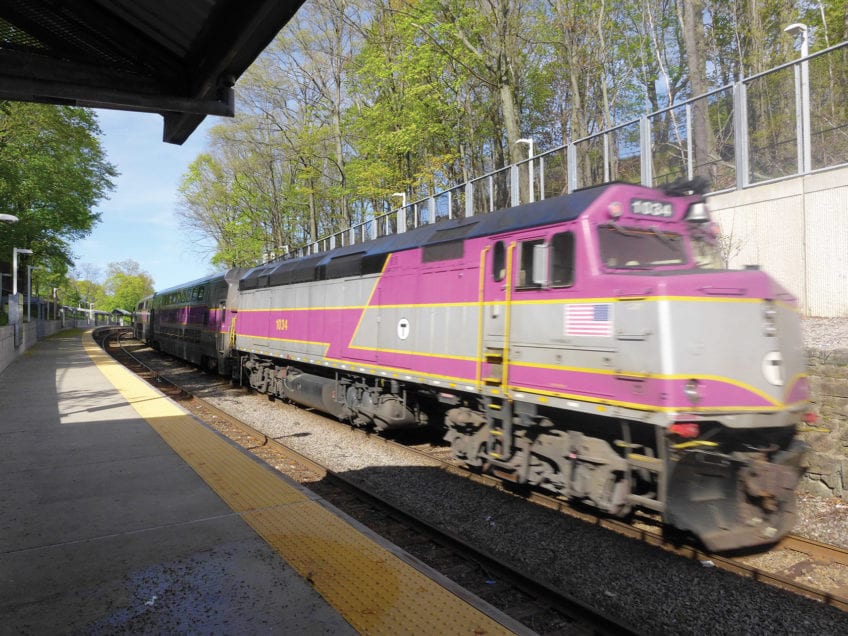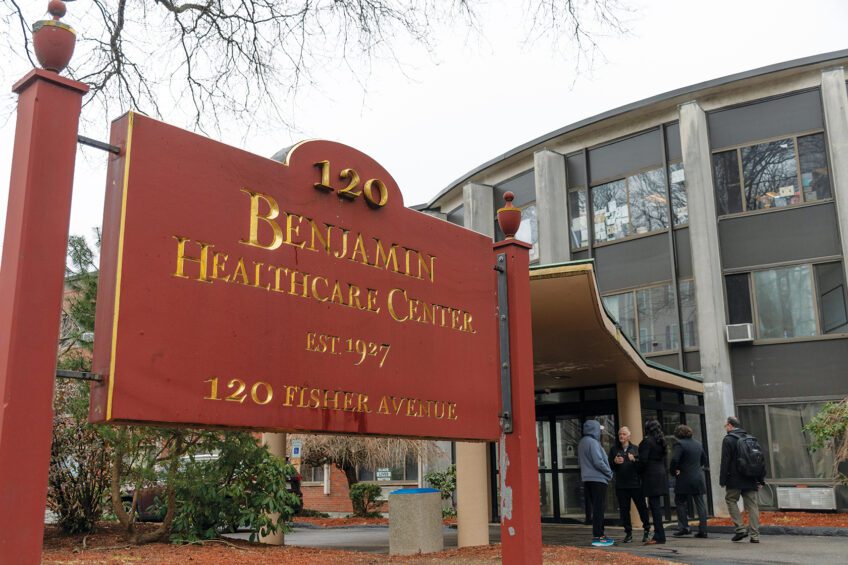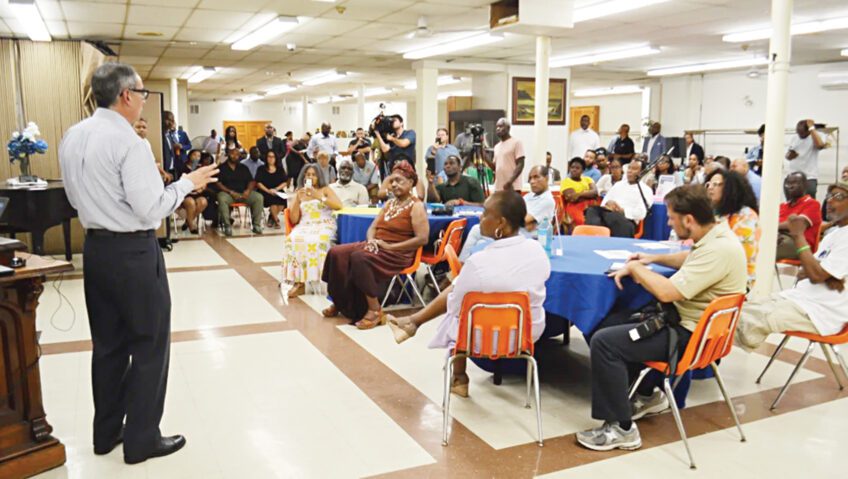Bus Rapid Transit praised for Dudley but responsibility for implementing is divided

There may be widespread agreement that we need to fix the T. But, as became clear at a “Transit in Dudley Square” panel hosted by the Rappaport Center last week, even if everyone were to agree on a solution, not everyone agrees on who “we” is.
Panel members included authorities from all levels: Stephanie Pollack, secretary of the state Department of Transportation; John Barros, Boston chief of Economic Development; and Juan Leyton, executive director of the Dudley Street Neighborhood Initiative, as well as Gilad Rosenzweig, founder and executive director of Smarter in the City, a high-tech start up business accelerator based in Dudley Square.
Pollack, Barros and Rosenzweig pointed to the transformation of Dudley Square’s bus system into a Bus Rapid Transit system as perhaps the easiest and most feasible transit improvement. The effort and time to implement are relatively low.
Leyton, too, spoke positively of time efficiencies generated by rapid transit, but cautioned that careful consideration needs to be given for how any development would impact the community.
Despite the seeming agreement, a complicated division of authority hampers the coordination needed to achieve this vision.
Rapid transit, rapidly delivered
BRT, if implemented at a Gold Standard level, has many attractive aspects: a dedicated bus line — typically in the center of the road — uninterrupted by traffic or parked cars; enclosed stations with amenities; prepaid fairs and wheel-chair accessible platforms for efficient boarding.
Even more appealing: it is a tangible solution that can be executed fairly quickly, compared to other transit fixes.
“Trains and subways can take years [or] decades to be implemented,” said Rosenzweig, who has lived in Tel Aviv, Toronto and London, all of which have BRT. “You’ve got to look at the buses because these can be implemented in a year.”
An advantage: BRT avoids expensive and time-intensive tunnel construction.
Rosenzweig said when London tackled transit reform in 2010, bus lanes were drawn in one night. The buses’ new efficiency caused a significant portion of commuters to choose them over trains.
“Literally overnight they painted lines in the roads,” he said. “[They] added hundreds of buses. Between 2000-2003 ridership increased by 22 percent — not in the whole system. A lot of it was taking [ridership] off the trains.”
Just bringing rapid transit to Dudley would impact thousands of people.
“Dudley Square’s bus routes, if you thought of it as a single transit station, would be the eighth largest transit system in Boston,” said Pollack. “16,000 people get on and off buses at Dudley.”
In their remarks, Rosenzweig and Pollack highlighted improvements on conditions and commuting times: enclosed stations with heat, shelter and public restrooms; mechanisms for purchasing or loading tickets prior to the bus’s arrival; raised platforms for easier and quicker wheelchair and stroller access.
Who conducts the conductors?
Responsibility for improving the MBTA is divided between the city and state, creating a system wherein either party can easily shift responsibility to the other.
The state runs the MBTA and controls buses and drivers. Boston manages roads and sidewalks, which include new bus lanes, stations and parking spaces as well as setting traffic light timing.
Transit reform, said Pollack, “takes a bus. I own those. It takes drivers. I’ve got lots of those. It takes space on asphalt — I don’t own any asphalt. That all belongs to the city.”
“The city controls half of what you need to make buses work, and the state controls buses and drivers,” she concluded.
“The MBTA first and foremost is a state authority,” countered Barros.
A third prong of interested parties is the community. And the community, Pollack said, is divided over how it wants its limited road space used.
“We say the community has to have a voice. The city has two voices: a voice for transit and a voice for driving,” she said. “Bus rapid transit is privileging buses over people in cars. That’s a local decision.”
Leyton said that community members are not opposing plans, but are seeking to ensure they are involved in planning the economic and transit revitalization of their neighborhood.
“From a community perspective we’re not saying no to things, we’re saying, ‘How can we sit at the table?’”
It also is not a discussion of simply how to get from point A to point B more quickly.
Community concerns extend past the immediate transit tangles to initiatives’ broader area impact. Transit improvements and other efforts to energize the economy, Leyton said, must be handled with care to address – and not exacerbate – residential unemployment and housing issues.
“If we do it, we have to do it right and think about how that’s going to impact the community,” he said. “Seventy-seven percent of people living in this community are renters. They fear they can be evicted because rent increases.”
New transit and businesses could make the area attractive to those with the means to spend more and price-out residents.
Driving forward
The state’s attention also is divided among all cities and towns, which makes it easy to set aside the question of Boston’s transit needs unless Boston approaches with a detailed plan, said Pollack.
“Bus rapid transit succeeds when the city wants it to succeed,” she said. “If the city said it wanted it and gave routes, the state would work on it.”
Time for those plans may be approaching.
Officials and representatives including Barros will visit Mexico City in November to study its BRT system. Once trip members get back, Barros said, the focus will be on revamping the Silver Line to meet BRT standards — measures against which the Silver Line falls short.






